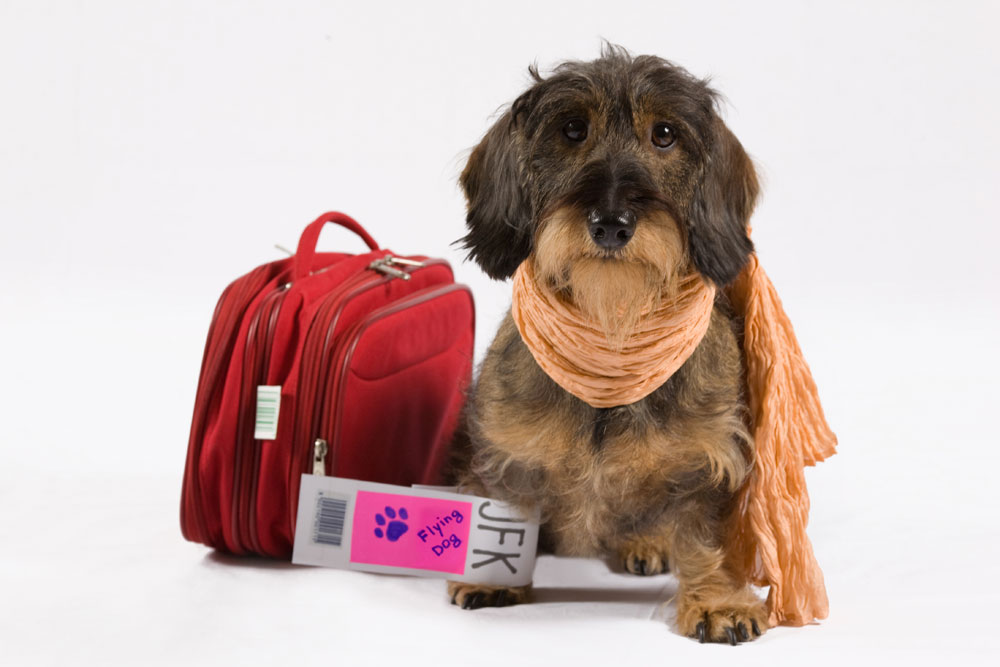Whenever you decide to take your pet with you on an air voyage, do consider that the AIRLINES usually have their own rules and procedures, so it is a good idea to contact the air company and inform them of your intentions. Nevertheless, the movement of pets as well as the animal health requirements applicable in this respect, are generally standardized internationally. Our aim here is to pinpoint THE MOST IMPORTANT THINGS YOU NEED TO CONSIDER when travelling with pets.
Microchip and vaccinate your pet
One of the most important thins when you even consider taking your pet with you on the plane is that any animal that travels abroad needs to be micro-chipped. So, previous to having carried out any procedures related to pet travel, you have to fit your best friend with a microchip. In this way, your cuddly friend will be identified correctly identified.
The microchip that is inserted in the animal has to be compliant with the ISO standards 11784 and 11785. These two ISO standards, i.e. 11784 & 11785, standardize the radio frequency identification (RFID) of animals, something that is generally accomplished by implanting a microchip under the animal’s skin. The small device is a 15 digit non-encrypted microchip which functions at 134.2kHz.
According to the current regulations, the number attributed to the microchip ought to be noted on each and every Veterinary and Vaccination Certificates. These rules apply worldwide. For example, the European Union states that to facilitate the existence of an unambiguous connection between the animal and the animal health certificate or passport, all pets should be fitted with an ELECTRONIC MICROCHIP (transponder) or have a VISIBLY DECIPHERABLE TATTOO, applied before 3 July 2011.
It is extremely important to observe these rules because, in case you do not manage to demonstrate that you have micro-chipped or pet and the airport authorities reach the conclusion that your pet does not meet the legal requirements for travelling by plane, “the competent authorities will decide in consultation with the official veterinarian: to return the animal to its country of origin; to isolate the animal under official control for the time necessary for it to meet the health requirements, at the expense of the owner or the natural person responsible for it; or as a last resort, to put the animal down, without financial compensation, where its return or isolation in quarantine cannot be envisaged.” This is by far not a desirable situation, so TAKE THIS THING SERIOUSLY.
After you had your pet micro-chipped, make sure that you also have it vaccinated against rabies. It is absolutely necessary to immunize you pet against this disease because rabies is nearly always fatal when left untreated and just as the WHO notes, it is present on all continents except Antarctica and infects both domestic and wild animals.
Make sure your pet is accepted
Do not forget to give your pet something to eat and drink
According to USDA’s requirements, you need to give your pet food and water at least four hours before taking off. However, you should not exaggerate with too much food or water; give them exactly how much they need. Excess eating and drinking would not be a good thing for a pet that travels by plane. This is particularly important because you’ll have to sign at check –in that you did give your pet something to eat and drink before the voyage.
How will your pet travel?
Taking your pet with you on the plane does not necessarily mean your speechless friend will sit next to you on the plane. They are usually transported as CARGO or as ACCOMPANIED LUGGAGE. However, there are some airlines that permit passengers to take their pets in the cabin of a airplane if the animals may fit under the passenger’s seat. If they do not, they will travel in a kennel that needs to be visibly marked with the pet’s name. The USDA also requires you to add your name and address as well as a telephone number belonging to a person at the destination who can be phoned concerning your pet. This is particularly essential if you are transporting your animal alone through the freight system.
Furthermore, according to both EU regulations as well as those implemented by the U.S. Department of Agriculture (USDA), countries may approve the movement of animals that are under three months old and unvaccinated, provided they have a PASSPORT and were previously kept in the same place they were born since birth and did not come into contact with wild animals or move with their mothers on whom they are yet reliant. Anyway, thousands of pets move SECURELY aboard an airplane each day. The carrier’s employees usually make every effort to take care of these animals just as they deserve.

 En
En Es
Es Fr
Fr